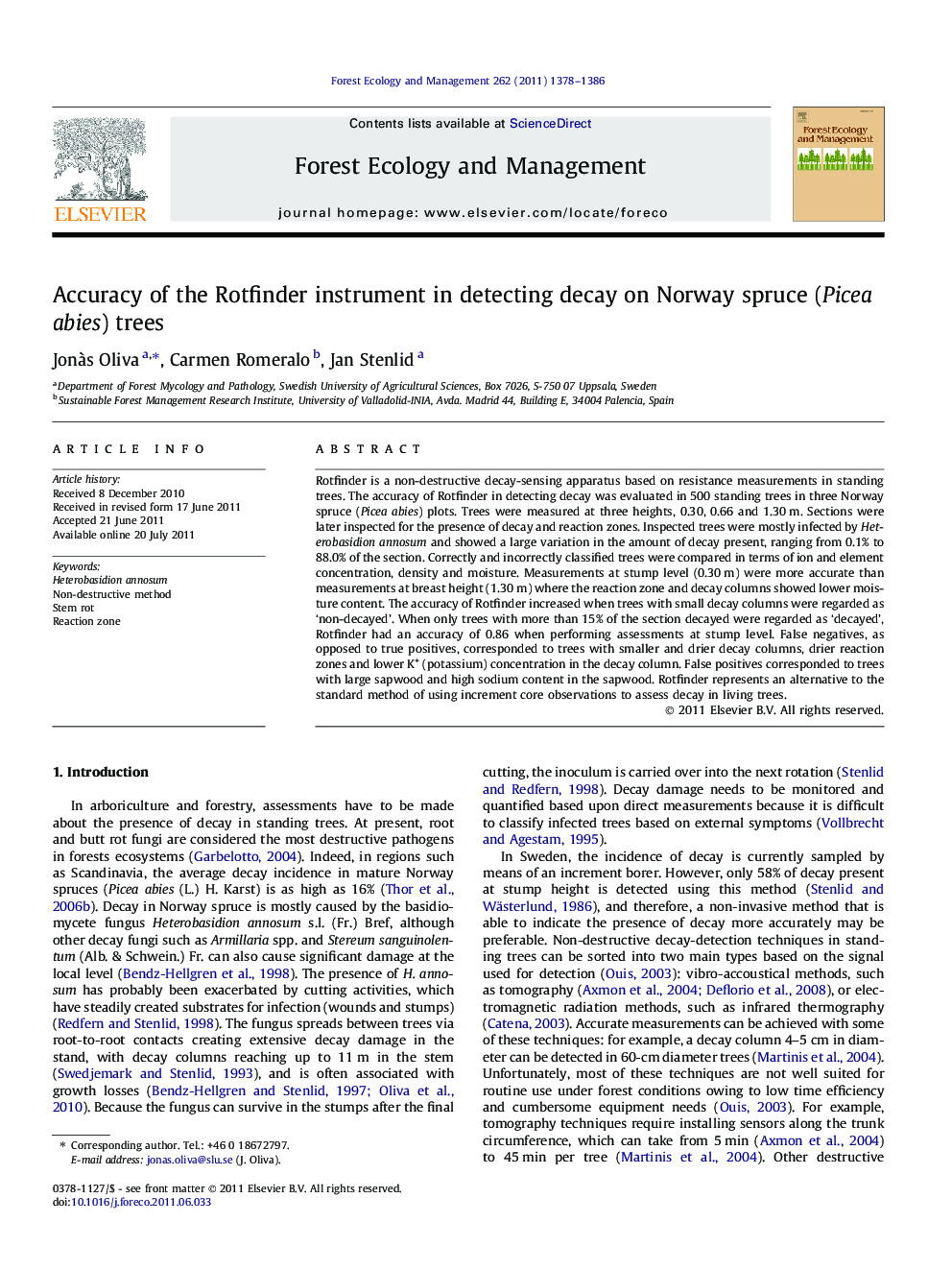| Article ID | Journal | Published Year | Pages | File Type |
|---|---|---|---|---|
| 87666 | Forest Ecology and Management | 2011 | 9 Pages |
Rotfinder is a non-destructive decay-sensing apparatus based on resistance measurements in standing trees. The accuracy of Rotfinder in detecting decay was evaluated in 500 standing trees in three Norway spruce (Picea abies) plots. Trees were measured at three heights, 0.30, 0.66 and 1.30 m. Sections were later inspected for the presence of decay and reaction zones. Inspected trees were mostly infected by Heterobasidion annosum and showed a large variation in the amount of decay present, ranging from 0.1% to 88.0% of the section. Correctly and incorrectly classified trees were compared in terms of ion and element concentration, density and moisture. Measurements at stump level (0.30 m) were more accurate than measurements at breast height (1.30 m) where the reaction zone and decay columns showed lower moisture content. The accuracy of Rotfinder increased when trees with small decay columns were regarded as ‘non-decayed’. When only trees with more than 15% of the section decayed were regarded as ‘decayed’, Rotfinder had an accuracy of 0.86 when performing assessments at stump level. False negatives, as opposed to true positives, corresponded to trees with smaller and drier decay columns, drier reaction zones and lower K+ (potassium) concentration in the decay column. False positives corresponded to trees with large sapwood and high sodium content in the sapwood. Rotfinder represents an alternative to the standard method of using increment core observations to assess decay in living trees.
► Rotfinder can non-invasively detect decay in standing trees. ► Highest sensitivity is when measurements are performed at stump level. ► Accurate detection of decay in trees with more than 15% decay (accuracy = 0.86).
